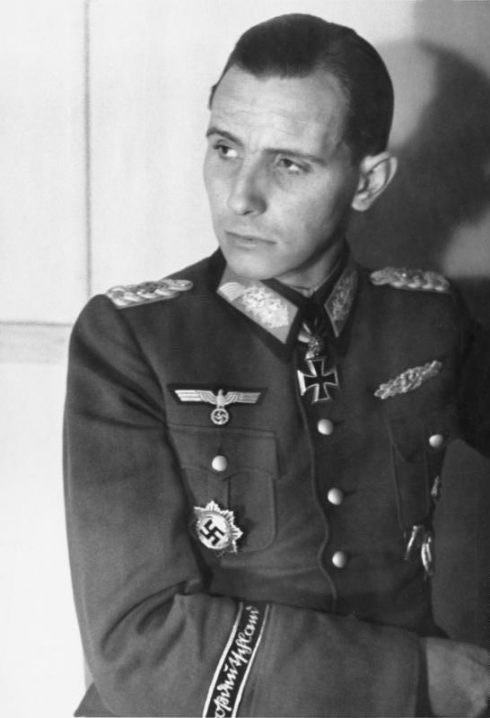A NEW book once again throws the spotlight on the history of the Costa del Sol as a refuge for wanted Nazis after World War II.
While many of Germany’s most wanted men fled to South America in a bid to escape justice, many more did not have to travel across the Atlantic to dip under the Allies’ radar.
They found a home in Andalucia instead, as Jose Manul Portero’s new book, Nazis on the Costa del Sol, reveals.
It deals with how the Costa del Sol provided shelter and tolerance to Nazi criminals, the privileges they enjoyed during their years and how this process has affected the country.
“Before, during and after the Second World War, Hitler’s Germany found in Franco’s Spain the ideal place for its mercantile and espionage activities first, and as a safe haven later”, Portero explains.
The Costa del Sol has not been the only Nazi sanctuary on Spanish, nor even the only Andalucian refuge, but it was a particularly significant one, due to the quantity and ‘quality’ of those who fled here.
So-called ‘Doctor Death’, Aribert Heim, ‘Adolf Hitler’s adopted son’, Leon Degrelle, and ‘Scarface’, Otto Skorzeny were just a few of the infamous Nazis who hid out in Malaga’s then remote coasts and countryside.
With Germany’s defeat in World War II, thousands of Nazi leaders were tried, convicted or executed and others subjected to the ‘denazification’ processes.

But others, pursued by Israel or Nazi hunters like Simon Wiesenthal, fled to Spain among other places, thanks to the good relationship between Hitler and Franco.
“Malaga had some unbeatable characteristics: excellent climatic conditions, gastronomy, ideal terrain for hiding and its proximity to the coast of Africa, which made it easy to flee if there were problems,” explained Portero.
Also, the friendly presence in Fuengirola of José Antonio Girón de Velasco, Minister of Labour who helped several Nazis during the time, gave them peace of mind.
So much so that dozens of Nazis spent their retirement enjoying Malaga’s sun.
Some of them lived for decades undisturbed, without their neighbours even knowing about their shameful past.
Portero, who has lived in Benalmadena for decades, tells how he even shared a table with Gerd Honsik, whom he knew as ‘Don Gerardo’.
He described him as ‘a gentleman who conversed pleasantly in Spanish’ without giving a hint that he was one of the ideologues of Austrian Nazism and a fugitive from justice in his country.
Portero, the former headmaster of a secondary school in Benalmadena, came across Violeta Friedmann’s story, an Auschwitz survivor who fought a court case against Hitler’s right hand man, Leon Degrelle.
He settled in Spain for years and did some interviews with Spanish magazines, where he tried to dismiss the reality of the Holocaust while giving free rein to his anti-Semitic views. He also gave an in-depth explanation of the amount of aid the Spanish government provided during his stay.

“If I am alive now and grandfather of six Spanish children, it’s because the Spanish people, in the great moment of cowardice, have behaved like great, courageous and noble people”, he said in a ABC interview in 1945.
Degrelle never missed an opportunity to tell people what Hitler allegedly once whispered to him: “If I had a son, I would like him to be like you”.
Spain repeatedly refused his extradition, protected him by staging a false escape and even granted him Spanish nationality and name: José León Ramírez Reina.
Marbella has also been home to some of the most important Nazis who fled to Spain.
Otto Remer, who was in charge of putting down Operation Valkyrie, the assasination plot against Hitler, was one. He lived peacefully in Marbella until his death in 1997.

‘Doctor Death’ Aribert Heim, who killed and tortured countless patients through grisly ‘experiments’ such as direct injections of toxic compounds like gasoline into the hearts of his victims was another to seek a home in marbella.
Also in the city was Otto Skozerny, ‘Scarface’, who was personally commissioned by Hitler to carry out Operation Oak, which ended with the rescue of Benito Mussolini on the Gran Sasso.
Some of these Nazis even became respected figures.
Hans Hoffmann, affectionately known as Juanito, was honorary consul of Germany in Malaga, without anyone apparently giving importance to the role he played as translator for Hitler in meetings of the highest level.
Even the publication of the list of 104 Nazi criminals sheltered in Spain in 1977 by El Pais did nothing to prevent the propogation of anti-semitic views in Spain by un-reconstructed Nazis.
Gerd Honsik boasted of having printed 80,000 copies of his work in Barcelona.
Degrelle gave lectures and had no problem publishing his memoirs.
Even Erik Norling, a friend of Degrelle’s, estimated that some 15,000 Nazi sympathisers were able to visit him or listen to his rallies during these years.
Portero states that ‘to consider that nazism disappeared with the death of Hitler and the defeat of Germany is a simplicity that few can believe at this point in time’.
The ‘tenacious’ fight of Friedmann against Degrelle made him write this book, and he decided to finish it by telling another survivor’s story: Nobel Prize winner and Auschwitz survivor Elie Wiesel.”In his work The Night, Wiesel says that to forget the victims is to kill them a second time,” he concludes.
READ MORE:

